Ever wondered how leading enterprises most often complete projects on schedule and under budget? The key is Kanban! 🔑
Through visualizing processes and supporting continuous development, Kanban project management has transformed the way we work. Studies 1 reveal that 87% of companies considered Kanban to be much more efficient than other project management methods.
David Anderson, a pioneer of the Kanban method 2, says, “Kanban provides a powerful framework for managing knowledge work, delivering high-quality results, and driving continuous improvement.”
Excited? Let’s dive in! 🚀
What is Kanban?
The Japanese word “kanban,” meaning “visual signal” or “card,” describes a system of workflow management that emphasizes visualizing tasks to increase efficiency and foster a culture of constant improvement.
Improving production efficiency and minimizing waste, Kanban was developed from Toyota’s manufacturing technique in the late 1940s.3 It became quite popular in the healthcare and technology sectors in the 2000s after being modified for knowledge work and project management.
Key Principles of Kanban

At the very core of Kanban is visualizing work, achieved through a board that represents tasks as cards progressing through clearly defined stages, represented by columns. This transparency fosters collaboration by making the workflow visible to everyone, ensuring that no task slips through the cracks.
A critical aspect of Kanban is limiting work in progress (WIP). By capping the number of tasks in each stage, teams can focus on completing work rather than juggling too many priorities at once. This approach not only prevents overload but also highlights bottlenecks, helping project managers and team members address them proactively and keep the workflow moving smoothly.
The principle of managing flow encourages teams to continuously monitor and refine their processes. This involves analyzing how work moves through the system, identifying inefficiencies, and making adjustments to optimize productivity. Regularly reviewing the flow helps ensure that tasks progress from start to finish without unnecessary delays.
Kanban also emphasizes the importance of clear process policies. By explicitly defining how tasks are prioritized, assigned, and completed, teams can align their efforts with organizational goals and maintain a consistent approach to their work. This clarity is particularly beneficial in environments where collaboration is key, as it ensures everyone is on the same page.
Finally, feedback loops play a crucial role in Kanban’s success. Whether through daily standups, retrospectives, or other review mechanisms, teams are encouraged to reflect on their progress, learn from their experiences, and adapt to changes as they arise. This continuous improvement mindset is what makes Kanban not just a tool but a philosophy that drives better outcomes.
Kanban Helps with Continuous Workflow Improvement
Kanban drives continuous workflow improvement by visualizing tasks, enforcing WIP limits, and enabling data-driven adjustments. A Kanban board makes bottlenecks visible, allowing teams to address issues swiftly to reduce cycle times.
By limiting WIP, your team prevents overload, leading to more predictable delivery and higher-quality outcomes. Regular reviews of metrics like lead time and cycle time provide insights for precise, iterative process improvements. Effective implementation involves setting up distinct workflow stages on the board, defining and adjusting WIP limits, and conducting frequent retrospectives to refine practices based on real-time data.
▶️ Want to make your Kanban process even more efficient? Read our latest article on how generative AI can enhance workflows with predictive analytics and automated task optimization in our latest guide. Check it out!
Kanban vs. Other Methods
| Feature | Kanban | Scrum | Lean | Six Sigma | Critical Path | Waterfall |
| Delivery | Continuous, adaptable | Fixed-length sprints, iterative | Continuous, incremental | Continuous, data-driven | Clear timeline, less flexibility | Linear, sequential |
| Workflow | Visual board, stages | Iterative, regular reviews | Visual management, optimize workflow | DMAIC, statistical analysis | Task dependenc, strict scheduling | Stage completion required |
| Flexibility | High, changes anytime | Iterative development | Broad, across business processes | Adaptable to changing demands | Flexible, adaptable | Low, difficult changes |
| Focus | Continuous, scientific | Iterative development, regular reviews | Customer value focus | Defect reduction | Ongoing adjustments | Predictable, structured |
| Origin | Agile subset, visual work, limit WIP | Ongoing feedback & Improvement | Lean principles, waste reduction | Data-driven, statistical | Predictable, structured | Linear, sequential |
Before deciding on one, you need to know how Kanban differs from other well-known project management methodologies.
An analysis of Kanban in comparison to Waterfall, Scrum, Agile, Lean, Six Sigma, and Critical Path is presented here:
Kanban vs. Scrum
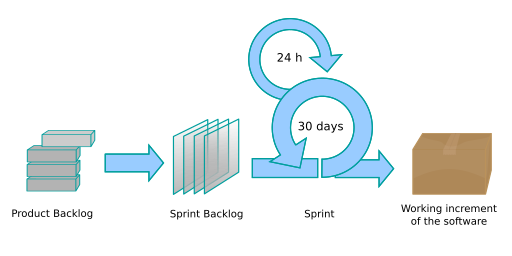
Kanban is all about flexibility and continuous delivery. It uses a visual board where tasks flow through columns representing stages of the process. This makes it easy to see what’s happening at a glance. It’s great for teams that need to adapt quickly to changing priorities, as changes can be made at any time.
Scrum, on the other hand, thrives on structure and predictability. Work is divided into fixed-length sprints, usually lasting 2–4 weeks, which create a clear framework for planning and delivering tasks. Scrum defines specific roles—like the Scrum Master, Product Owner, and Development Team—to ensure accountability and alignment. Regular reviews and retrospectives are built into the process, encouraging teams to learn and improve with every sprint.
Both methods are powerful tools, but the right choice depends on your team’s needs and the nature of your projects. Interested in diving deeper into Scrum? Check out our article on how Scrum works and why it might be the perfect fit for your team!
Kanban vs. Agile
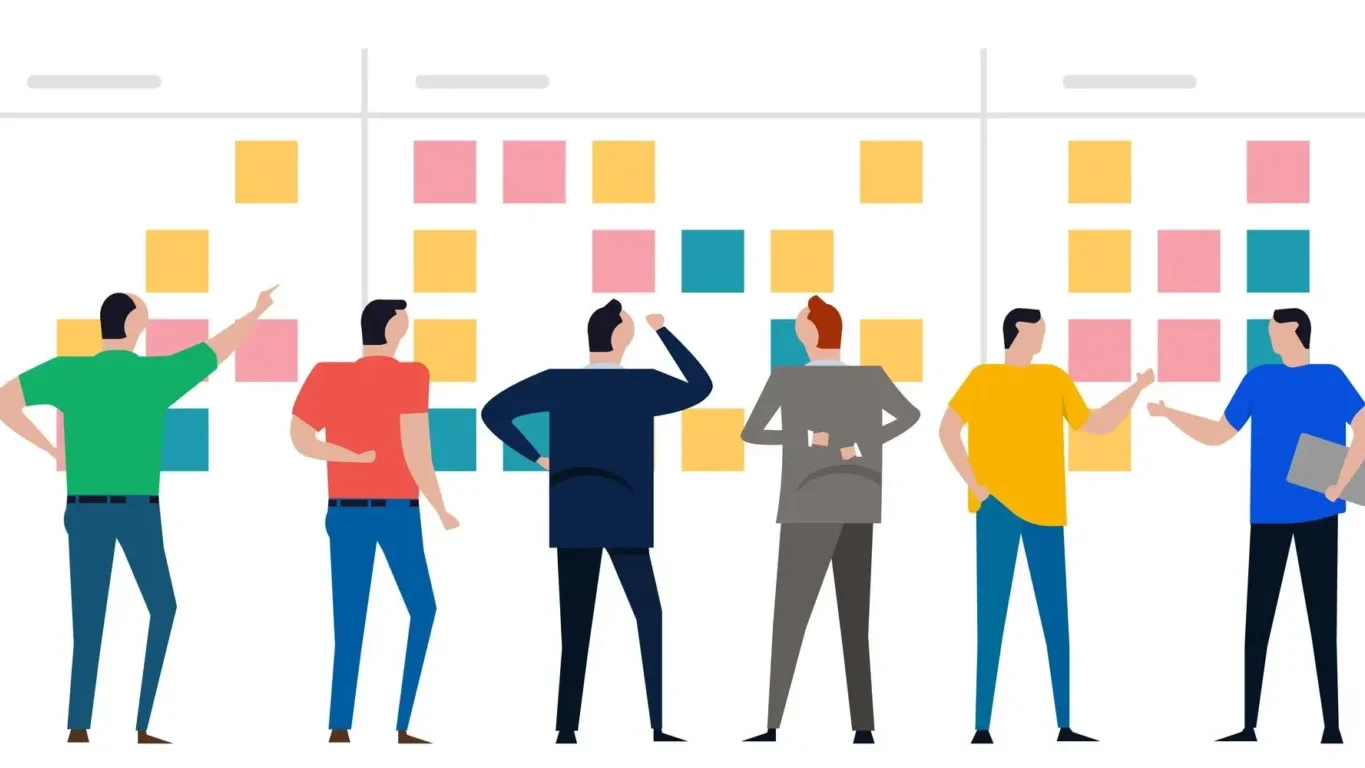
Kanban, which originated from Lean manufacturing, focuses on visualizing workflows with Kanban boards that show tasks moving through various stages. This makes it easy to spot bottlenecks and optimize how work flows through the system. Kanban is perfect for teams looking to improve their processes without making major changes to their workflow.
Agile, on the other hand, is a broader philosophy that includes several methodologies, like Scrum, Extreme Programming (XP), and even Kanban itself. Agile is all about flexibility, iterative development, and working closely with customers to adapt to their needs. Teams deliver work in small, incremental chunks, gathering feedback regularly to stay aligned with goals and adjust to changes quickly. This makes Agile a great fit for dynamic projects that need constant collaboration and responsiveness.
Kanban focuses on streamlining workflows, while Agile provides the big-picture principles that guide how teams collaborate and deliver value. Want to explore Agile in more detail and see how it could transform your projects? Check out our article on Agile and its key principles!
Kanban vs. Lean
Lean is a comprehensive management philosophy that originated from the Toyota Production System, aiming to maximize customer value while minimizing waste. It’s built around five key principles: defining what customers value, mapping out every step in the process to eliminate waste, ensuring smooth workflow, producing only what’s needed (based on demand), and continuously striving for improvement. To achieve these goals, Lean relies on practical tools like value stream mapping to visualize processes, 5S to keep workspaces organized, and Kaizen for ongoing, incremental improvements.
Kanban, on the other hand, is a workflow management method inspired by Lean principles. It focuses on visualizing tasks through Kanban boards, where work items progress through columns representing different stages of a process. This visual approach helps teams quickly identify bottlenecks and optimize how work flows. Unlike Lean’s broader scope, Kanban hones in on improving workflows at an operational level.
Kanban vs. Six Sigma
Six Sigma and Kanban both aim to improve processes, but they tackle this goal in very different ways. Six Sigma is all about precision and eliminating defects. It’s a structured, data-driven methodology designed to minimize variability and ensure processes are running as close to perfect as possible—think fewer than 3.4 defects per million opportunities.
At its core is the DMAIC framework: Define the problem, Measure the process, Analyze root causes, Improve through solutions, and Control to sustain the changes. This rigorous approach relies heavily on statistical analysis to back decisions, making it especially effective in industries like manufacturing or healthcare, where consistency and accuracy are paramount.
On the other hand, Kanban takes a more flexible and visual approach to managing workflows. It can see exactly where tasks are at any given moment, identify bottlenecks, and adjust workflows as needed. Unlike Six Sigma, which often requires specialized training and tools, Kanban is easy to implement and adapt, making it a popular choice for dynamic environments where priorities can shift quickly.
While Six Sigma is laser-focused on reducing defects and driving quality through a rigorous, analytical approach, Kanban shines in creating transparency, optimizing flow, and fostering continuous, incremental improvement.
Together, these methodologies offer complementary strengths—Kanban for managing work efficiently day-to-day and Six Sigma for tackling deeper process improvements that demand a data-driven, results-oriented strategy.
Kanban vs. Critical Path

Kanban and Critical Path Method (CPM) are two project management approaches that serve different purposes. CPM is a highly structured method used to determine the longest sequence of dependent tasks in a project, known as the critical path. This sequence dictates the minimum time needed to complete the project, making CPM invaluable for projects with strict deadlines. By focusing on task dependencies and scheduling, CPM provides a clear, predictable timeline for delivery, helping teams ensure every critical task is completed on time. However, its rigidity means there’s little room for flexibility—changes to the critical path can significantly impact the entire project schedule.
In contrast, Kanban is all about flexibility and adaptability, making it ideal for dynamic, ongoing workflows. It uses visual boards to map out tasks and their progress, giving teams a transparent view of what’s being worked on, what’s blocked, and what’s completed. Unlike CPM’s strict focus on deadlines, Kanban thrives on continuous improvement, allowing teams to make real-time adjustments without disrupting the workflow.
While CPM is perfect for projects with fixed timelines and clear task dependencies, Kanban is better suited for environments where priorities shift and flexibility is key. Together, they offer complementary strengths: CPM for managing time-critical projects and Kanban for fostering ongoing efficiency and adaptability.
Kanban vs. Waterfall
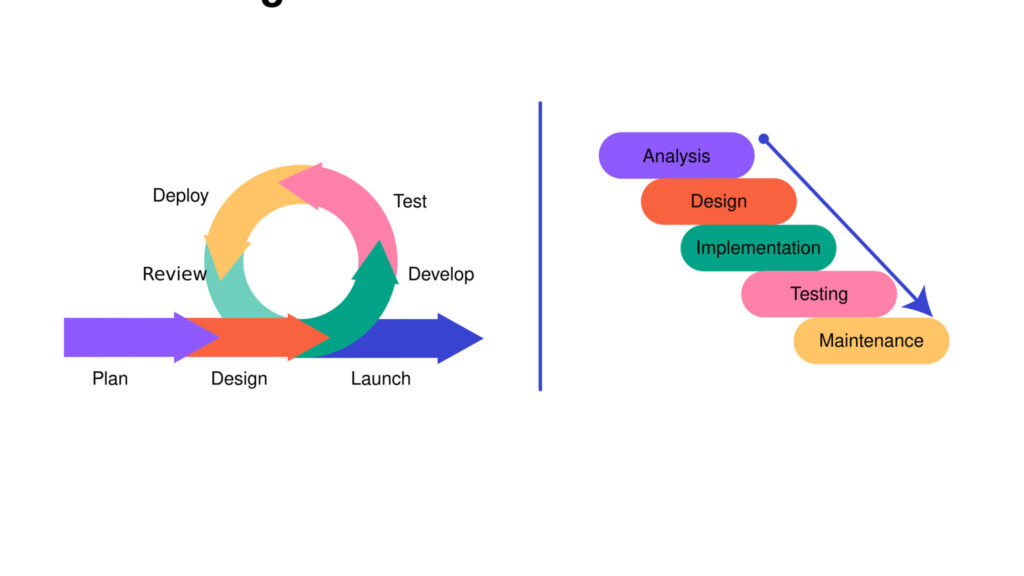
Kanban and Waterfall are two very different approaches to managing projects, each with its own advantages.
Waterfall is a highly structured method that breaks a project into distinct stages—like requirements, design, implementation, testing, and deployment. Each stage must be completed before moving to the next, which creates a clear and predictable process. This makes Waterfall a great choice for projects with well-defined goals and requirements that are unlikely to change, such as construction or hardware development. However, its rigidity can be a challenge. If changes are needed after a stage is finished, they can be difficult and costly to implement.
On the other hand, Kanban takes a more flexible, iterative approach. It uses visual boards to track tasks and allows teams to adapt to changes as they happen. Unlike Waterfall, which delivers a final product at the end of the process, Kanban focuses on continuous delivery and improvement, making it better suited for projects where priorities might shift. Both methods have their strengths, so the right choice depends on whether your project needs the structure and predictability of Waterfall or the adaptability of Kanban.
Key Kanban Principles

Kanban is a versatile project management tool that can revolutionize your team’s workflow. Let’s delve into its core principles and see how they can be applied effectively.
1. Visualizing Work: Imagine a board where every task is displayed, moving through stages like “To Do,” “In Progress,” and “Done.” This visual setup allows everyone to grasp the project’s status at a glance. For instance, in software development, columns might include backlog, coding, testing, and deployment, providing clarity and transparency.
2. Limiting Work in Progress (WIP): By setting limits on the number of tasks in progress, teams can maintain focus and prevent overload. This approach ensures that current tasks are completed before new ones begin, promoting a steady and efficient workflow.
3. Managing Flow: Keeping a close eye on task progression helps in identifying and resolving issues promptly. For example, Schlenk, a chemical manufacturer, utilized Kanban to map their entire process, reducing cycle times from 110 to 44 days and uncovering inefficiencies.
4. Making Process Policies Explicit: Clearly defined and communicated process policies ensure that everyone understands the workflow, setting clear expectations and maintaining consistency. A marketing team, for instance, might specify task categories and requirements on their Kanban cards, aligning all members and preventing misunderstandings.
5. Implementing Feedback Loops: Regular feedback sessions, such as daily stand-ups or retrospectives, allow teams to assess performance and make necessary adjustments. Aerosud, an aerospace company, introduced daily Kanban meetings to enhance task visibility and communication, leading to improved efficiency and throughput.
6. Improving Collaboratively: Encouraging continuous improvement through collaborative efforts enables teams to fine-tune their processes based on real-world data and experiences, fostering a culture of shared growth and success.
Step-by-Step Guide to Implement Kanban
Step 1: Set Up Your Kanban Board
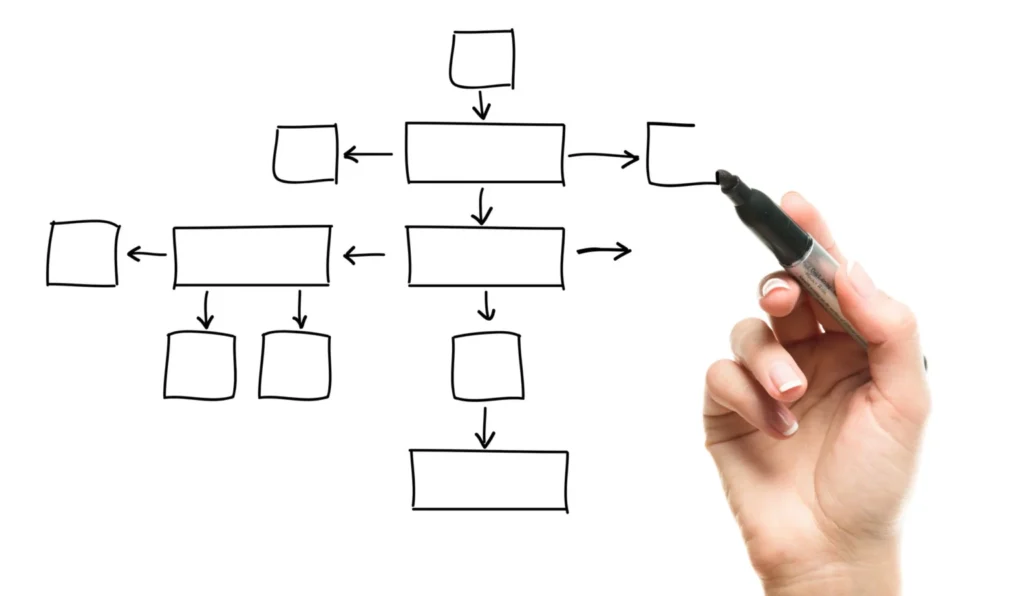
Begin by defining your workflow, identifying the key stages your tasks will pass through—common phases include “Backlog,” “In Progress,” and “Done.” Adjust these stages to match the specific requirements of your project.
Next, create a visual representation of your workflow, either on a physical whiteboard or using digital tools like Mirorim.
Once your board is ready, focus on creating Kanban cards. Each card represents a task and should include essential details like a description, assignees, due dates, and any relevant attachments, ensuring all necessary information is easily accessible.
Finally, prioritize your tasks on the board, arranging them so that the team can focus on the most critical items first. This organized, visual approach makes it easier to manage tasks and keep your team aligned.
▶️Clear role assignments are essential for ensuring tasks flow seamlessly through the Kanban process. For actionable tips on defining and aligning team responsibilities, explore Effective Strategies for Assigning Team Roles,
Step 2: Customize Your Board
Start by setting WIP (Work-in-Progress) limits, which help prevent task overload and maintain a smooth workflow. To do this, identify the maximum number of tasks that can be open at each stage without overwhelming your team. Adjust these limits based on your team’s capacity and workload to ensure a fair and manageable distribution of tasks.
Next, enhance visual management by using color-coded cards, tags, and icons to represent priority levels, task types, and deadlines. These visual signals make it easy to quickly assess the urgency and status of tasks at a glance.
Finally, customize your board’s columns to reflect the specific steps in your process. For instance, you might include stages like “To Do,” “In Progress,” “Testing,” and “Completed” to accurately map your workflow.
Step 3: Adopt Kanban Practices
Regular Stand-Up Meetings

Daily stand-up meetings are short, focused sessions—typically around 15 minutes—where the team reviews the Kanban board, discusses progress, and tackles any roadblocks. These quick check-ins keep everyone aligned, encourage collaboration, and help resolve issues before they escalate, ensuring the workflow stays smooth and efficient.
Equally important is embracing continuous improvement, which lies at the heart of Kanban. Teams can make small, incremental adjustments based on real-time feedback and performance data, helping refine workflows over time.
Key performance indicators (KPIs) like cycle time, lead time, and throughput offer valuable insights into where bottlenecks exist and how the process can be optimized. By tracking these metrics, your team can make informed decisions to enhance productivity and balance workloads.
Feedback loops are another crucial element. Regular retrospectives give teams a chance to reflect on what worked, what didn’t, and how to improve. These sessions not only help pinpoint areas needing attention but also provide an opportunity to celebrate wins and boost team morale. Plus, by adjusting the Kanban board based on retrospective insights, you can ensure it remains a dynamic and effective tool that evolves with your team’s needs.
And if you’re looking for ways to strengthen team connections, check out our article on good icebreaker questions—it’s full of great ideas to break the ice and build stronger relationships.
Best Practices of Kanban Project Management
1. Optimize WIP Limits Based on Data
To get started, visualize your workflow on a Kanban board. Map out every stage, from “To Do” to “In Progress” to “Done.” This gives your team a clear view of task progression and helps pinpoint where work tends to pile up. Once you’ve outlined your workflow, set initial WIP limits.
A good rule of thumb is to start with a limit that’s about twice the number of team members working on that stage, giving some flexibility without causing overload.
But WIP limits aren’t set in stone. Use metrics like cycle time (how long it takes to complete a task) and throughput (how many tasks are completed in a set period) to monitor performance. Regularly tweak your limits to address bottlenecks and maintain a steady flow.
Collaboration is key here—encourage team members to help out in stages nearing their WIP limits. This shared responsibility keeps everyone aligned and the workflow balanced. Want to take your team’s dynamics to the next level? Check out our blog on effective team dynamics and discover actionable strategies to build a stronger, more cohesive team! 👌
2. Implement Explicit Policies

Explicit policies are the glue that holds your Kanban system together, ensuring every team member understands the rules and expectations for moving tasks across the board. To implement these effectively, start by defining clear criteria for each stage. For example, specify what qualifies a task to move from “Backlog” to “In Progress” or from “In Progress” to “Done.” Document these rules directly on your Kanban board using visual cues like notes or markers, making them easy to follow.
Team collaboration is key to crafting these policies. Involve your team in drafting the rules to ensure they are practical and gain buy-in. For instance, a marketing team once introduced a rule requiring feedback notes on tasks in the “Ready for Review” column before moving them to “Approved.” This small change eliminated delays caused by incomplete handoffs, improving accountability and efficiency.
To keep these policies effective, review them regularly—monthly or at the end of significant projects. Adjust them as your workflow evolves, ensuring they remain relevant to your team’s needs. By defining, communicating, and continuously refining explicit policies, you not only enhance consistency and accountability but also establish clear boundaries within your workflow—boundaries that empower your team to work more effectively and with less ambiguity.
For more tips on setting boundaries that drive project success, check out our article on how to define boundaries in a project.
3. Use Class of Service for Prioritization
Class of Service (CoS) is a game-changing tool in Kanban, helping teams prioritize tasks based on urgency and impact. By sorting work into categories like Expedited (critical and high-priority), Fixed Date (time-sensitive), Standard (routine work), and Intangible (low-priority tasks), you can manage diverse workloads without sacrificing clarity or efficiency. To make it even easier, use visual markers like colors or icons to highlight the priority of each task—this way, everyone knows what demands immediate attention.
Implementing CoS ensures high-priority tasks get completed quickly while keeping routine work flowing. For example, a marketing team used CoS to handle a product launch (Expedited), campaign deadlines (Fixed Date), and regular content updates (Standard). This approach allowed them to meet urgent deadlines while maintaining consistency in their ongoing tasks.
To get the most out of CoS, define specific guidelines for each category and set limits on how much work can be in progress. For instance, limit Expedited tasks to one or two at a time to avoid overloading the team while keeping the focus on what matters most. Regularly review how tasks are distributed among categories to ensure resources are allocated effectively. As priorities shift or team capacity changes, adjust these limits to maintain balance and productivity.
By using Class of Service in your Kanban workflow, you’ll bring structure and transparency to your prioritization process, ensuring your team stays focused on delivering what’s most important. Curious about how effort fits into prioritization strategies? Check out our blog on Level of Effort (LOE) to learn how to estimate and manage work effectively in your projects.
4. Optimize the Kanban Board Layout
To create a board that truly works for your team, start by mapping out your workflow stages and turning them into columns. For example, a product development team might use columns like “Backlog,” “Design,” “Development,” “Review,” “Testing,” and “Launched” to represent every project phase clearly.
To add extra clarity, use sub-columns for tasks that are “In Progress” or “Blocked,” so bottlenecks stand out immediately. Swimlanes can further organize the board by dividing tasks into categories, such as feature development, bug fixes, or maintenance. This level of customization ensures everyone on the team knows where each task stands and what needs attention.
But don’t stop there—an effective Kanban board evolves with your workflow. Review and update the layout regularly to keep it aligned with your team’s needs. Outdated or overly complex designs can lead to confusion and inefficiencies, so simplicity and relevance are key.
When done right, an optimized Kanban board boosts transparency, streamlines handoffs, and empowers your team to work more efficiently. Want to take your creativity as a project manager to the next level? Check out our blog on creative project management for tips and strategies to organize and innovate your processes like never before.
5. Use Cumulative Flow Diagrams (CFDs)
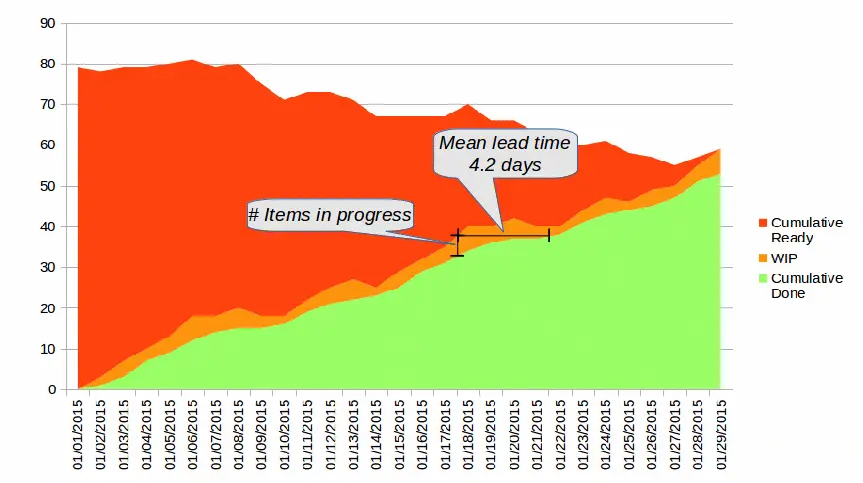
Cumulative flow diagrams (CFDs) are one of the most effective tools in Kanban, giving you a clear picture of how your workflow is performing. Think of them as a visual health check for your system. Each colored band on a CFD represents a workflow stage, like “Backlog,” “In Progress,” or “Done.” The width and slope of these bands reveal key insights into your process—whether tasks are moving smoothly, where bottlenecks are forming, and how long work takes to complete.
To get the most out of CFDs, check them regularly. For example, if you notice the testing phase band is widening, it means tasks are piling up. This could be your cue to reallocate resources or streamline the process to clear the bottleneck. One team noticed a similar issue in their testing phase and, after adjusting their workflow, reduced delays by 25% and significantly improved their overall efficiency.
CFDs aren’t just for managers, though—they’re a collaborative tool. Share your findings with the team during stand-ups or retrospectives to identify problem areas together. This not only promotes teamwork but also ensures everyone is aligned on priorities and solutions.
6. Visualize Blockers and Dependencies
Blockers and dependencies are the sneaky hurdles that can derail any project, but in Kanban, making them visible is a game-changer. When you map out these obstacles on your Kanban board, you can spot and tackle issues early, keeping your workflow smooth and your team on track. Use clear visual signals—like red flags for blockers or arrows to show dependencies—so everyone can quickly see where the bottlenecks are. Tools like Mirorim or Trello make this even easier with built-in features for tagging and tracking blockers and dependencies.
For instance, a software development team used red flags to highlight tasks waiting for external approvals. This simple tweak helped them prioritize resolutions, cutting approval delays by 30% and keeping their deadlines intact. They also used arrows to map task dependencies, allowing them to shift resources and schedules proactively when upstream tasks were delayed.
7. Use Kaizen for Continuous Improvement

Kaizen, which translates to “change for the better,” is a key principle in Kanban that drives continuous improvement. It’s all about making small, incremental changes that add up over time to boost quality, efficiency, and team adaptability.
To put Kaizen into action, start by encouraging your team to look for small inefficiencies in their workflows. Simple adjustments—like streamlining task handoffs or setting up daily check-ins to address bottlenecks—can make a big difference without disrupting the entire process.
For example, a marketing team added a dedicated review stage to their Kanban board, ensuring feedback was addressed before tasks moved forward. This one change reduced rework by 20% and helped them meet deadlines more consistently. Similarly, a software development team started holding brief daily check-ins to flag roadblocks early, cutting their cycle times by 15% in just three months.
Tracking these changes is just as important as implementing them. Use metrics like cycle time, lead time, and defect rates to measure the impact of each improvement. Regularly review these adjustments with your team to ensure they’re driving real results and staying aligned with your goals.
8. Use Swimlanes for Workflow Segmentation
Swimlanes are a game-changer in Kanban, helping you visually segment tasks for better organization and workflow clarity. Divide your Kanban board into horizontal lanes to group tasks by team, project, or task type. That makes it easier to balance priorities and manage workloads. To set up swimlanes, think about the key categories in your workflow—like teams, content types, or project phases—and label each lane clearly to reflect these divisions.
For example, a content marketing team could organize their Kanban board with swimlanes for blogs, videos, and infographics. This setup not only makes it easy to track progress in each category but also ensures deadlines are met and resources are allocated effectively.
In software development, swimlanes might be used to separate tasks into features, bug fixes, and maintenance, allowing teams to stay focused on specific priorities while keeping distinct workflows on track.
The real power of swimlanes lies in their ability to improve visibility, promote better task prioritization, and foster collaboration. When every team member understands how the board is structured, it becomes easier to focus on what matters most.
This approach is especially useful in marketing projects, where multiple campaigns, assets, and deadlines often need to be managed simultaneously. Check out our blog on marketing project management for expert tips on managing campaigns with ease and precision!
9. Monitor and Adapt Flow Metrics
Key metrics include lead time, which tracks the total time from task initiation to completion; cycle time, which focuses on the time spent actively working on a task; and throughput, which measures how many tasks your team completes in a given period. Together, these indicators paint a clear picture of your team’s performance.
To get the most out of these metrics, use tools like digital Kanban boards to automatically track them. Start by setting benchmarks for each metric, then review them regularly—weekly or biweekly—with your team. This collaborative review fosters a data-driven approach to improvement, ensuring everyone is aligned on priorities and progress.
For example, a software development team identified a bottleneck during their code review stage when analyzing cycle time. By reallocating resources and streamlining their review process, they reduced cycle time by 20% and increased throughput by 15%, enabling faster delivery and higher productivity.
By continuously monitoring and adapting flow metrics, you can identify bottlenecks, optimize workflows, and achieve consistent project success. Want to better understand one of Kanban’s key metrics? Check out our article on what is lead time to dive deeper into how it can transform your project management.
Real-world Examples of Kanban Project Management
1. ULMA
ULMA Handling Systems 4, a Spanish engineering firm, specializes in developing automated intralogistics solutions. These projects are inherently complex, involving extensive cross-departmental coordination and compliance with strict regulatory standards.
Challenges: The primary issues were a lack of visibility into work processes, inefficient communication, and extended delivery times. The intricacy of their projects often led to misunderstandings and delays.
Solution: ULMA adopted Kanban boards and regular cadences (structured meetings) to enhance transparency and streamline communication. Explicit Kanban policies were also defined to standardize workflows.
Outcome: Post-implementation, ULMA saw a significant reduction in project delivery times. The improved visibility into workflows helped identify bottlenecks early, allowing for timely interventions. Communication across departments improved, leading to a more synchronized operation. Notably, their project delivery increased by 30%, and delays were cut by 50%.
3. Schlenk
Schlenk, a chemical manufacturer 5, aimed to enhance its R&D project management by improving transparency and efficiency.
Challenges: Inefficient handoffs between teams, limited visibility into process blockers, and a lack of clear performance metrics were major headaches. These often resulted in delayed project timelines and inconsistent output.
Solution: Using Kanban project management, Schlenk visualized their entire workflow, identifying and addressing bottlenecks. They adopted interconnected Kanban boards using the Flight Levels concept to manage work from strategy to execution.
Outcome: The transformation reduced cycle time from 110 days to 44 days. Communication and workflow efficiency improved significantly, with clearer task assignments and faster issue resolution. Additionally, the overall project success rate improved by 40%, highlighting Kanban’s effectiveness in optimizing project management in the chemical industry.
4. Aerosud

Aerosud, an aerospace manufacturer 6, needed to enhance the management of its engineering projects and IT tasks while complying with strict regulations.
Challenges: The main issues included rigid processes, regulatory compliance, and inadequate team communication and capacity management. These factors often led to project delays and inefficiencies.
Solution: The IT division at Aerosud introduced Kanban boards and implemented work-in-progress (WIP) limits, along with daily meetings to improve visibility and communication.
Outcome: The IT division’s throughput doubled from 60 to 120 tickets within 3 days. This improvement in the IT sector spurred broader adoption across engineering projects. The enhanced visibility and communication led to better capacity management and quicker resolution of bottlenecks, reducing project timelines by 25%.
5. GE Aviation Czech
GE Aviation Czech 7 was engaged in a high-stakes aircraft engine development program that required precise coordination and clear prioritization.
Challenges: The team faced overwork, unclear priorities, and a lack of direction, leading to inefficiencies and delays.
Solution: Kanban project management allowed GE Aviation Czech to visualize their workflow comprehensively. They set up Kanban boards to track tasks through various stages, from backlog to deployment.
Outcome: The introduction of Kanban improved efficiency significantly. The clear visualization of tasks helped the team prioritize and manage their workload more efficiently. This led to a 20% reduction in project delivery times and a 15% increase in team productivity.
Conclusion
Kanban offers a comprehensive view of workflows, making it easier to identify bottlenecks and streamline processes. By setting Work In Progress (WIP) limits, teams can avoid overload, maintain focus, and improve task flow, effectively managing workloads. Continuous improvement, driven by managing flow and refining processes, boosts both productivity and efficiency. Clear and explicit process policies ensure that every team member understands the workflow, creating consistency and accountability.
Regular feedback loops, such as daily stand-ups and retrospectives, enable ongoing development by providing opportunities to address challenges and refine strategies. By fostering teamwork and applying data-driven techniques, Kanban empowers teams to make meaningful, fact-based improvements. Organizations that implement Kanban often report significant gains, with some achieving up to a 30% increase in productivity and a 50% reduction in project lead times.
Ready to see Kanban in action? Try Mirorim for free and experience how it can transform your project workflows. Create your FREE account today and take the first step towards a more efficient and productive future!
FAQ | Kanban Project Management
Visualize Work: Use a Kanban board to display tasks and workflows.
Limit Work in Progress (WIP): To avoid bottlenecks, set limits on the number of tasks in progress.
Manage Flow: Continuously monitor and optimize the flow of tasks through the system.
Make Process Policies Explicit: Clearly define and communicate process policies to ensure everyone understands the workflow.
Implement Feedback Loops: Use regular meetings like stand-ups and retrospectives to review progress and make improvements.
Improve Collaboratively, Evolve Experimentally: Encourage ongoing development and continuous improvement through scientific methods and empirical data.
Visual Signals: Use cards or tickets to represent tasks on a Kanban board.
Columns: Create columns on the Kanban board to represent different stages of the workflow.
WIP Limits: Set limits on the number of tasks in each stage to prevent overload.
Commitment Point: The stage where tasks are committed to be completed.
Delivery Point: The final stage where tasks are considered complete and delivered.
Kanban: Focuses on continuous delivery, visual management, and flexibility with no fixed-length sprints. Emphasizes WIP limits and allows changes at any time.
Scrum: Operates in fixed-length sprints (typically 2-4 weeks) with defined roles (Scrum Master, Product Owner, Development Team) and regular reviews. Emphasizes iterative development and incremental deliveries.
Kanban: A subset of Agile that emphasizes visualizing work, limiting WIP, and managing flow. Suitable for ongoing, process-driven projects.
Agile is an overarching philosophy that includes frameworks like Scrum, XP, and others. It focuses on iterative development, customer collaboration, and flexibility.
Kanban is considered part of Agile methodologies due to its focus on continuous improvement and flexibility. It is not related to the linear and sequential approach of the waterfall method.
No, Kanban is not a Six Sigma. While both focus on process improvement, Six Sigma aims to reduce defects and variability through a data-driven approach. In contrast, Kanban focuses on visualizing work and managing flow for continuous improvement.
The basic Kanban formula involves visualizing tasks on a Kanban board, setting WIP limits, and managing the flow of tasks to ensure efficiency and continuous improvement.
Kaizen is a Japanese term meaning “continuous improvement.” It involves making small, incremental changes to processes to improve efficiency and quality over time.
Kanban is a visual system for managing work as it moves through a process. It uses cards and boards to represent tasks and stages, helping teams see the status of work and identify bottlenecks.
An example of a Kanban system is a software development team using a Kanban board with columns for “Backlog,” “In Progress,” “Testing,” and “Done,” with tasks represented as cards moving through these stages.
Set Up Your Kanban Board: Define workflow stages and create Kanban cards with task details.
Customize Your Board: Set WIP limits and use visual signals like color-coded cards.
Adopt Kanban Practices: Conduct regular stand-up meetings and continuous improvement cycles.
Kanban for beginners involves setting up a simple board with columns like “To Do,” “In Progress,” and “Done.” Start with a few tasks, set WIP limits, and focus on visualizing work and managing flow.
Kanban is part of Agile methodologies, focusing on continuous improvement and flexibility. It differs from Scrum, which operates in fixed-length sprints with defined roles and regular reviews.
Kanban is considered both Lean and Agile. It derives from Lean principles, emphasizing waste reduction and flow efficiency, and is also part of Agile due to its focus on continuous improvement and flexibility.
No, Kanban does not have fixed-length sprints. It focuses on continuous delivery and allows changes to be made at any time.
No, Kanban is not a waterfall. Kanban is an Agile methodology focusing on continuous improvement and flexibility, unlike the linear and sequential approach of the waterfall method.
Yes, Kanban often includes daily stand-ups to review progress, discuss any issues, and plan the day’s work.
No, there is no defined role of a Scrum Master in Kanban. Kanban teams typically manage their own workflow without specific roles like in Scrum.
Kanban uses tasks, which can include user stories, bug fixes, or any work items represented on Kanban cards.
While Kanban does not have prescribed ceremonies, it often includes regular meetings like daily stand-ups and retrospectives to review progress and identify improvements.
Creating a Kanban Board: Define columns for different workflow stages.
Using Kanban Cards: Represent tasks as cards on the board.
Setting WIP Limits: Limit the number of tasks in each stage to maintain flow.
A real-life example of Kanban is a manufacturing company using a Kanban board to visualize production stages, from raw materials to finished goods, ensuring efficient workflow and timely delivery.
Sticky notes on a Kanban board represent tasks and move through different stages (columns) as work progresses. They provide a visual representation of the status and flow of work.
References
- STATE OF KANBAN REPORT 2022. (2022). In Kanban.University/State-of-kanban. https://kanban.university/wp-content/uploads/2022/10/State-of-Kanban-Report-2022.pdf ↩︎
- Kanban for Creative Knowledge Work: D.J. Anderson Interview | Kanban Library. (n.d.). Kanban Tool. https://kanbantool.com/kanban-library/why-kanban/kanban-for-creative-knowledge-work ↩︎
- Kanban made simple : demystifying and applying Toyota’s legendary manufacturing process in SearchWorks catalog. (n.d.). https://searchworks.stanford.edu/view/13513711 ↩︎
- Orchestrate Complex Projects by Means of Simple Practices. (2021). In CASE STUDY. BERRIPOCESS. Retrieved August 13, 2024, from https://businessmap.io/wp-content/uploads/website-images/case-studies/Case_Study_ULMA.pdf ↩︎
- How a Chemical Company Improved its R&D Projects Performance. (2021). In Businessmap. Retrieved August 13, 2024, from https://businessmap.io/wp-content/uploads/website-images/kanban-resources/Case-studies/Case_Study_Schlenk-final.pdf ↩︎
- Enhancing Engineering Project Portfolio Management & Accelerating Digital Transformation in the Aerospace Industry. (2021). In CASE STUDY (pp. 1–4). Businessmap. https://www.xuviate.com/bootcamp/ ↩︎
- Lean Team Boosted Its Productivity During New Aircraft Engine Program. (2021). In BUSINESSMAP. Retrieved August 13, 2024, from https://businessmap.io/wp-content/uploads/website-images/kanban-resources/Case-studies/GE-Case-Study_NEW.pdf ↩︎


One Response
Great blog! The detailed explanation of Kanban principles and best practices is super helpful. The actionable insights make it easy to implement for better project management. I want to share one thing regarding project management. I recently stumbled across a Generative AI Free Toolkit for Project Managers and there are free e-books with loads of tips. It would also be beneficial for your readers as well.
Download the full guide for FREE and learn how these tools can transform your approach: